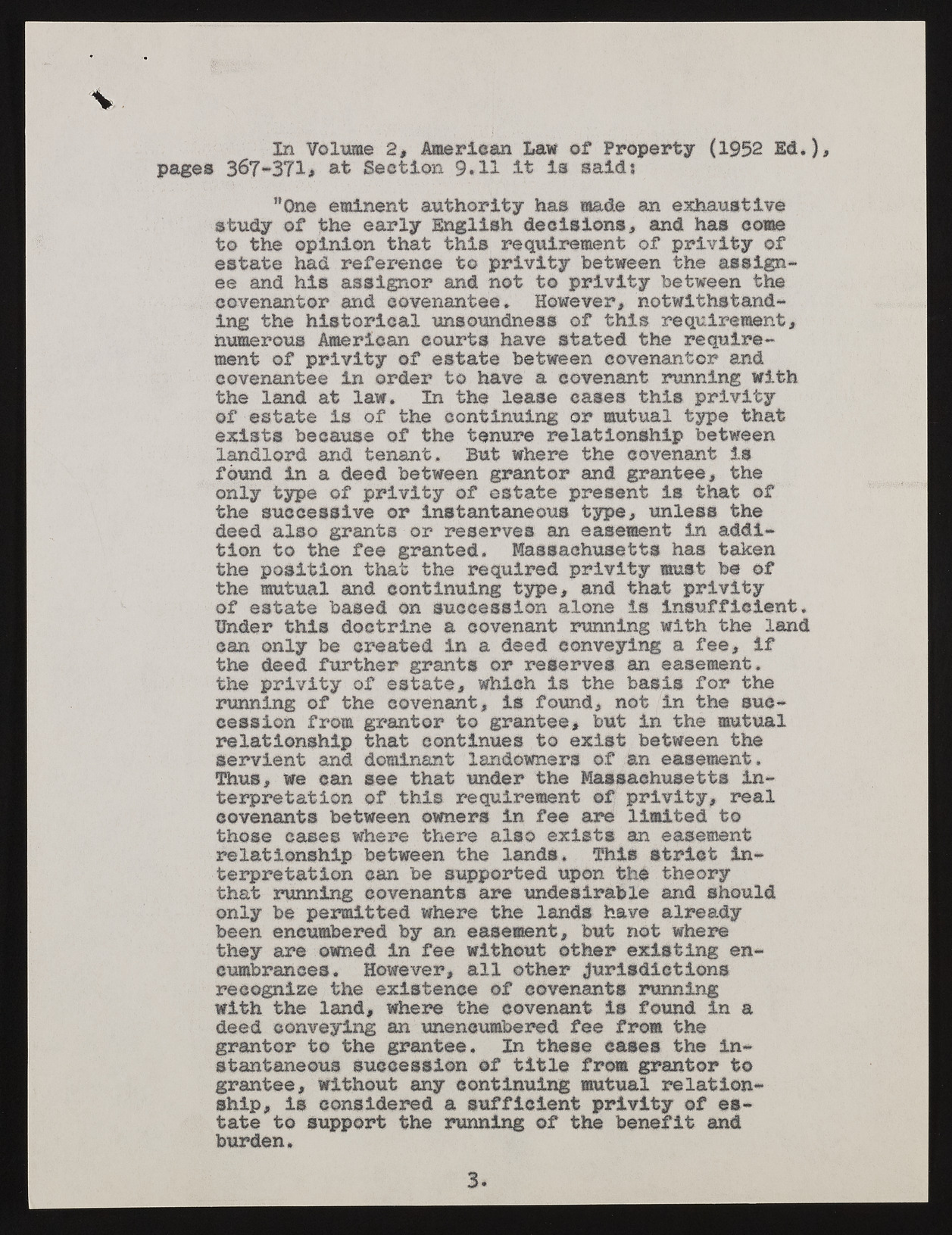Copyright & Fair-use Agreement
UNLV Special Collections provides copies of materials to facilitate private study, scholarship, or research. Material not in the public domain may be used according to fair use of copyrighted materials as defined by copyright law. Please cite us.
Please note that UNLV may not own the copyright to these materials and cannot provide permission to publish or distribute materials when UNLV is not the copyright holder. The user is solely responsible for determining the copyright status of materials and obtaining permission to use material from the copyright holder and for determining whether any permissions relating to any other rights are necessary for the intended use, and for obtaining all required permissions beyond that allowed by fair use.
Read more about our reproduction and use policy.
I agree.Information
Digital ID
Permalink
Details
More Info
Rights
Digital Provenance
Publisher
Transcription
u In Volume 2, American Law of Property (1952 Ed.)# pages 367-371# at Section 9.11 It la said: "One eminent authority has wade an exhaustive study of the early English decisions, and has come to the opinion that this requirement of privity of estate had reference to privity between the assignee and his assignor and not to privity between the covenantor and covenantee. However, notwithstanding the historical unsoundness of this requirement, numerous American courts have stated the requirement of privity of estate between covenantor and covenantee in order to have a covenant running with the land at law. In the lease cases this privity of estate is of the continuing or mutual type that exists because of the tenure relationship between landlord and tenant. But where the covenant is found In a deed between grantor and grantee, the only type of privity of estate present Is that of the successive or instantaneous type, unless the deed also grants or reserves an easement in addition to the fee granted. Massachusetts has taken the position that the required privity must be of the mutual and continuing type, and that privity of estate based on succession alone Is insufficient. Under this doctrine a covenant running with the land can only be created in a deed conveying a fee, if the deed further grants or reserves an easement, the privity of estate, which is the basis for the running of the covenant, is found, not In the succession from grantor to grantee, but in the mutual relationship that continues to exist between the servient and dominant landowners of an easement. Thus, we can see that under the Massachusetts interpretation of this requirement of privity, real covenants between owners in fee are limited to those cases where there also exists an easement relationship between the lands. This strict interpretation can be supported upon the theory that running covenants are undesirable and should only be permitted where the lands have already been encumbered by an easement, but not where they are owned in fee without other existing encumbrances. However, all other jurisdictions recognize the existence of covenants running with the land, where the covenant is found in a deed conveying an unencumbered fee from the grantor to the grantee. In these cases the instantaneous succession of title from grantor to grantee, without any continuing mutual relationship, is considered a sufficient privity of estate to support the running of the benefit and burden. 3

